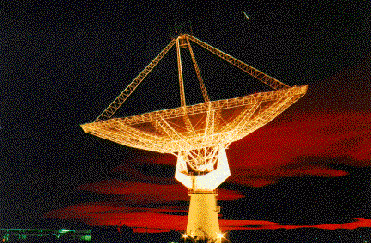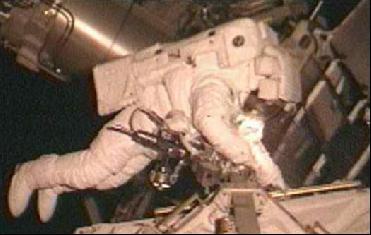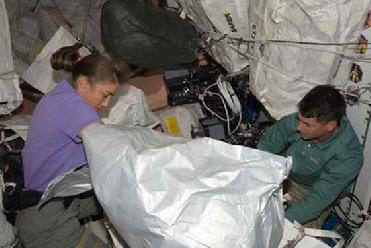
Giant Metrewave Radio Telescope (GMRT) is located at a site about 80 km north of Pune, Western India
NEW DELHI (BNS): A discovery by a team of Australian astronomers that hydrogen gas is not present in the Universe has left many puzzled and startled. In a recent study, the Australian astronomers said that something vital was missing in the distant galaxies. They arrived at the theory that hydrogen gas, the most common constituent of normal matter in the Universe was missing.
Dr Steve Curran and colleagues at the University of New South Wales made their observations with the Giant Metrewave Radio Telescope in India, which comprises thirty 45-metre-diameter dishes and is one of the world's most sensitive radio telescopes. The Australian team study will be published in a forthcoming issue of Monthly Notices of the Royal Astronomical Society.
The astronomers said that if anything, hydrogen was expected to be more abundant so early in the life of the Universe as it had not yet been consumed by the formation of all the stars and galaxies one is familiar with today.
By looking at galaxies in which the light has taken over 11.5 billion years to reach the Earth, they found an apparent lack of hydrogen when the Universe was only two billion years old - long before the Sun and all other stars present in the Universe had been formed.
Explaining the process, the scientists said that stars form when extremely cold clouds of hydrogen collapse under their own gravity and until they become dense enough to ignite nuclear fusion. Over billions of years, this leads the formation of the heavier elements that make up planets, people and other matter. Each galaxy should contain gas masses equivalent to several billion stars, as in the Milky Way, they said.
“Since hydrogen gas is consumed by star formation, we may expect more hydrogen gas in the distant, and therefore earlier, Universe as all of the stars we see today have yet to form,” Curran said.
His group analysed the data from optical telescopes and found that, although apparently dim due to their immense distances, the distant galaxies actually emit vast amounts of energy. This energy is generally believed to result from the friction of the material spiralling at close to the speed of light into the black hole lurking within the heart of each galaxy. These ‘quasars’ are found all over the sky but occur predominantly in the early Universe.
Talking about the visibility of objects, Curran said that at such distances, only the most optically bright objects were known. “The intense radiation from the matter accreting into the black hole in these quasars is extreme and we believe that this radiation is ripping the electrons from the atoms, destroying the hydrogen gas,” he said.
This would leave the gas as a soup of free subatomic particles known as ‘plasma’ which cannot be detected at the radio frequencies searched, he said.
“Searching for neutral hydrogen in quasar host galaxies at such distances is really pushing current radio telescopes to their limits,” Curran said adding that with the next generation of instruments, such as the Australian Square Kilometre Array Pathfinder, one would be able to probe deep enough to find just how ionised the gas was.
Curran said that meanwhile the astronomers should search for sources of radio emission that have no optical counterpart. “The emission tells us that something invisible to an optical telescope is there. Such galaxies would host more benign quasars in which we may detect the neutral gas,” Curran added.
 Previous Article
Previous Article Next Article
Next Article













The Indian Air Force, in its flight trials evaluation report submitted before the Defence Ministry l..
view articleAn insight into the Medium Multi-Role Combat Aircraft competition...
view articleSky enthusiasts can now spot the International Space Station (ISS) commanded by Indian-American astr..
view article